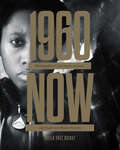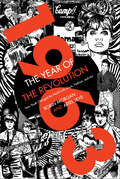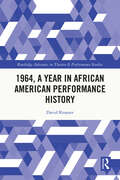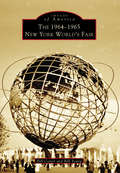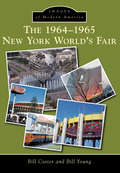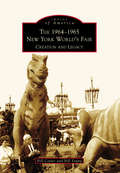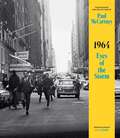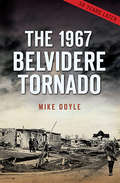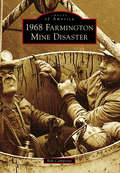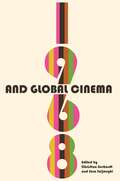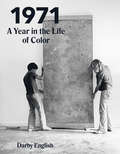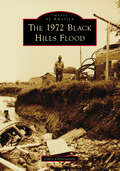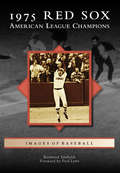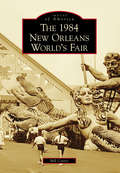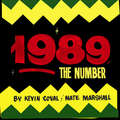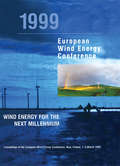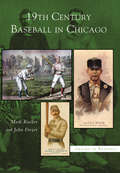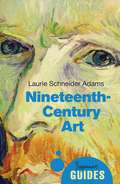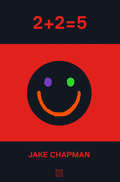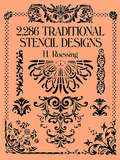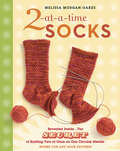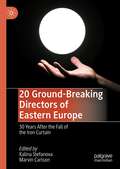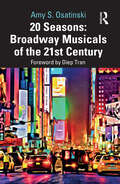- Table View
- List View
1960Now: Photographs of Civil Rights Activists and Black Lives Matter Protests
by Sheila Pree BrightA “powerful photo collection” documenting the Black Lives Matter movement and its parallels to the historic fight for civil rights (Publishers Weekly).The fight for equality continues, from 1960 to now. Combining portraits of past and present social justice activists with documentary images from recent protests throughout the United States, #1960Now sheds light on the parallels between the 1960s Civil Rights Movement and the Black Lives Matter movement of today. Shelia Pree Bright’s striking black-and-white photographs capture the courage and conviction of ‘60s leaders and a new generation of activists, offering a powerful reminder that the fight for justice is far from over. #1960Now represents an important new contribution to American protest photography.“Visually arresting . . . activism photography shot across the U.S., from Ferguson, Missouri, to Atlanta to Philadelphia.” —Essence“While millions of cellphone photos are generated each day—some forceful testaments to racial violence and injustice—few possess the grace and quiet lyricism of her images.” —The New York Times Lens blog
1963: How Youth Changed the World with Music, Fashion, and Art
by Robin Morgan Ariel LeveBeginning in London and ricocheting across the Atlantic, 1963: The Year of the Revolution is an oral history of twelve months that changed our world—the Youth Quake movement—and laid the foundations for the generation of today.Ariel Leve and Robin Morgan's oral history is the first book to recount the kinetic story of the twelve months that witnessed a demographic power shift—the rise of the Youth Quake movement, a cultural transformation through music, fashion, politics, theater, and film. Leve and Morgan detail how, for the first time in history, youth became a commercial and cultural force with the power to command the attention of government and religion and shape society.While the Cold War began to thaw, the race into space heated up, feminism and civil rights percolated in politics, and JFK’s assassination shocked the world, the Beatles and Bob Dylan would emerge as poster boys and the prophet of a revolution that changed the world.1963: The Year of the Revolution records, documentary-style, the incredible roller-coaster ride of those twelve months, told through the recollections of some of the period’s most influential figures—from Keith Richards to Mary Quant, Vidal Sassoon to Graham Nash, Alan Parker to Peter Frampton, Eric Clapton to Gay Talese, Stevie Nicks to Norma Kamali, and many more.
1964, A Year in African American Performance History (ISSN)
by David KrasnerThis book examines the Civil Rights Movement from the perspective of a single year, 1964.The book analyses specific events that occurred in 1964 as benchmarks of the Civil Right Movement, making the case that 1964 was a watershed year. Each chapter considers individually politics, rhetoric, sports, dramatic literature, film, art, and music, breaking down the events and illustrating their importance to the social and political life in the United States in 1964. This study emphasizes 1964 as a nodal point in the history of the Civil Rights Movement, arguing that it was within this single year that the tide against racism and injustice turned markedly.This book will be of great interest to the scholars and students of civil rights, theatre and performance, art history, and drama literature.
1964-1965 New York World's Fair, The: Creation And Legacy (Images of America)
by Bill Cotter Bill YoungThe 1964-1965 New York World's Fair was the largest international exhibition ever built in the United States. More than one hundred fifty pavilions and exhibits spread over six hundred forty-six acres helped the fair live up to its reputation as "the Billion-Dollar Fair." With the cold war in full swing, the fair offered visitors a refreshingly positive view of the future, mirroring the official theme: Peace through Understanding. Guests could travel back in time through a display of full-sized dinosaurs, or look into a future where underwater hotels and flying cars were commonplace. They could enjoy Walt Disney's popular shows, or study actual spacecraft flown in orbit. More than fifty-one million guests visited the fair before it closed forever in 1965. The 1964-1965 New York World's Fair captures the history of this event through vintage photographs, published here for the first time.
1964-1965 New York World's Fair, The: Creation And Legacy (Images of Modern America)
by Bill Cotter Bill YoungAdvertised as the "Billion-Dollar Fair," the 1964-1965 New York World's Fair transformed a sleepy park in the borough of Queens into a fantasy world enjoyed by more than 51 million visitors from around the world. While many countries and states exhibited at the fair, the most memorable pavilions were built by the giants of American industry. Their exhibits took guests backward and forward in time, all the while extolling how marvelous everyday life would be through the use of their products. Many of the techniques used in these shows set the standard for future fairs and theme parks, and the pavilions that housed them remain the most elaborate structures ever built for an American fair. The 1964-1965 New York World's Fair showcases the beauty of this international spectacular through rare color photographs, published here for the first time.
1964-1965 New York World's Fair, The: Creation and Legacy (Images of America)
by Bill Cotter Bill YoungWhen the gates of the 1964-1965 New York World's Fair swung open on April 24, 1964, the first of more than 51 million lucky visitors entered, ready to witness the cutting edge of worldwide technology and progress. Faced with a disappointing lack of foreign participants due to political contention, the fair instead showcased the best of American industry and science. While multimillion-dollar pavilions predicted colonies on the moon and hotels under the ocean, other forecasts, such as the promises of computer technology, have surpassed even the most optimistic predictions of the fair. The 1964-1965 New York World's Fair: Creation and Legacy uses rare, previously unpublished photographs to examine the creation of the fair and the legacies left behind for future generations.
1964: Eyes of the Storm
by Paul McCartney“Millions of eyes were suddenly upon us, creating a picture I will never forget.” —Paul McCartney Taken with a 35mm camera by Paul McCartney, these largely unseen photographs capture the explosive period, from the end of 1963 through early 1964, in which The Beatles became an international sensation and changed the course of music history. Featuring 275 images from the six cities—Liverpool, London, Paris, New York, Washington, D.C., and Miami—of these legendary months, 1964: Eyes of the Storm also includes: • A personal foreword in which McCartney recalls the pandemonium of British concert halls, followed by the hysteria that greeted the band on its first American visit • Candid recollections preceding each city portfolio that form an autobiographical account of the period McCartney remembers as the “Eyes of the Storm,” plus a coda with subsequent events in 1964 • “Beatleland,” an essay by Harvard historian and New Yorker essayist Jill Lepore, describing how The Beatles became the first truly global mass culture phenomenon Handsomely designed, 1964: Eyes of the Storm creates an intensely dramatic record of The Beatles’ first transatlantic trip, documenting the radical shift in youth culture that crystallized in 1964. “You could hold your camera up to the world, in 1964. But what madness would you capture, what beauty, what joy, what fury?” —Jill Lepore
1967 Belvidere Tornado, The: A 40-year Anniversary Perspective (Disaster)
by Mike DoyleClaiming the lives of seven adults and seventeen children, the Belvidere tornado struck the most vulnerable at the worst possible time: just as school let out. More than five hundred people suffered injuries. New interviews and fascinating archival history underscore the horrific drama, as well as the split-second decisions of victims and survivors that saved their families and neighbors. Since the tragedy, three more devastating tornadoes have further defined Boone County’s resilience: Poplar Grove in 2008, Caledonia in 2010 and Fairdale in 2015.
1968 Farmington Mine Disaster (Images of America)
by Bob CampioneCoal in the United States was discovered in the 18th century by landowners and farmers on the slopes of the hillsides in the Appalachian region. It was not until the late 19th century that this black rock would become a part of an industrial revolution. One of the first mines to commercially produce coal was in Fairmont, West Virginia, and began the Consolidated Coal Corporation. On November 20, 1968, the Farmington No. 9 mine explosion changed the course of safety for future mining and the lives of 78 families whose sons, husbands, fathers, and loved ones never came back from the cateye shift the next day.
1968 and Global Cinema (Contemporary Approaches to Film and Media Series)
by Paula Rabinowitz Robert Stam Victor Fan Allyson Nadia Field J. M. Tyree Peter Hames Lily Saint Morgan Adamson Christina Gerhardt Sara Saljoughi Rocco Giansante Rita De Grandis David Desser Graeme Stout Mauro Resmini Man-tat Terence Leung Sarah Hamblin Laurence Coderre Pablo La Parra-Perez1968 and Global Cinema addresses a notable gap in film studies. Although scholarship exists on the late 1950s and 1960s New Wave films, research that puts cinemas on 1968 into dialogue with one another across national boundaries is surprisingly lacking. Only in recent years have histories of 1968 begun to consider the interplay among social movements globally. The essays in this volume, edited by Christina Gerhardt and Sara Saljoughi, cover a breadth of cinematic movements that were part of the era's radical politics and independence movements. Focusing on history, aesthetics, and politics, each contribution illuminates conventional understandings of the relationship of cinema to the events of 1968, or "the long Sixties." The volume is organized chronologically, highlighting the shifts and developments in ideology in different geographic contexts. The first section, "The Long Sixties: Cinematic New Waves," examines both the visuals of new cinemas, as well as new readings of the period's politics in various geopolitical iterations. This half of the book begins with an argument that while the impact of Italian Neorealism and the French New Wave on subsequent global new waves is undeniable, the influence of cinemas of the so-called Global South is pivotal for the era's cinema as well. The second section, "Aftershocks," considers the lasting impact of 1968 and related cinematic new waves into the 1970s. The essays in this section range from China's Cultural Revolution in cinema to militancy and industrial struggle in 1970s worker's films in Spain. In these ways, the volume provides fresh takes and allows for new discoveries of the cinemas of the long 1968. 1968 and Global Cinema aims to achieve balance between new readings of well-known films, filmmakers, and movements, as well as new research that engages lesser-known bodies of films and film texts. The volume is ideal for graduate and undergraduate courses on the long sixties, political cinema, 1968, and new waves in art history, cultural studies, and film and media studies.
1971: A Year in the Life of Color
by Darby EnglishIn this book, art historian Darby English explores the year 1971, when two exhibitions opened that brought modernist painting and sculpture into the burning heart of United States cultural politics: Contemporary Black Artists in America, at the Whitney Museum of American Art, and The DeLuxe Show, a racially integrated abstract art exhibition presented in a renovated movie theater in a Houston ghetto.1971: A Year in the Life of Color looks at many black artists’ desire to gain freedom from overt racial representation, as well as their efforts—and those of their advocates—to further that aim through public exhibition. Amid calls to define a “black aesthetic,” these experiments with modernist art prioritized cultural interaction and instability. Contemporary Black Artists in America highlighted abstraction as a stance against normative approaches, while The DeLuxe Show positioned abstraction in a center of urban blight. The importance of these experiments, English argues, came partly from color’s special status as a cultural symbol and partly from investigations of color already under way in late modern art and criticism. With their supporters, black modernists—among them Peter Bradley, Frederick Eversley, Alvin Loving, Raymond Saunders, and Alma Thomas—rose above the demand to represent or be represented, compromising nothing in their appeals for interracial collaboration and, above all, responding with optimism rather than cynicism to the surrounding culture’s preoccupation with color.
1972 Black Hills Flood, The (Images of America)
by Corey ChristiansonOver 50 years have passed since the Black Hills flood swept through western South Dakota in 1972, leaving tragedy in its wake. This book explores the extent of the damage through images that highlight Rapid City, Keystone, and the surrounding Black Hills. Dignitaries, including Sen. George McGovern, visited the Black Hills in the aftermath; these visitors, along with the actions taken for recovery, make an appearance in the story. Today, the Black Hills are a tourist destination, with Mount Rushmore National Memorial, Crazy Horse Memorial, and Custer State Park being the most well-known attractions. /Corey Christianson has spent years researching the 1972 Black Hills flood. She was a part of the 50th commemoration of the flood, for which she, along with a team of talented individuals, created an award-winning exhibit about the flood and the recovery of the Black Hills. The images in this book are from the Rapid City Public Library, US Air Force, Keystone Area Historical Society, and other organizations that strive to remember, honor, and commemorate the flood. /
1975 Red Sox: American League Champions (Images of Baseball)
by Raymond Sinibaldi Fred LynnThe 1975 American League Champion Boston Red Sox squared off with the Cincinnati Reds in what is widely recognized as one of the best World Series ever played. The Major League Baseball Network has named its sixth game "the greatest game ever played." The Red Sox were led by two rookies, 21-year-old Jim Rice and 22-year-old Fred Lynn, who formed a rookie duo the likes of which baseball had never seen. They combined with a budding superstar in Carlton Fisk and his aging counterpart Carl Yastrzemski to lead the Red Sox attack, while a wily Luis Tiant anchored the pitching staff. After a first-round sweep of the three-time World Champion Oakland A's, they advanced to a Fall Classic that echoes through the ages, and in the words of Carlton Fisk, the Red Sox won "three games to four.
1984 New Orleans World's Fair, The (Images of America)
by Bill CotterIn 1984, the city of New Orleans hosted the last world's fair held in the United States. Conceived as part of an ambitious effort to revitalize a dilapidated section of the city and establish New Orleans as a year-round tourist destination, it took more than 12 years of political intrigue and design changes before the gates finally opened. Stretching 84 acres along the Mississippi River, the fair entertained more than seven million guests with a colorful collection of pavilions, rides, and restaurants during its six-month run. While most world's fairs lose money, the 1984 New Orleans World's Fair had the dubious distinction of going bankrupt and almost closing early. However, the $350-million investment did succeed in bringing new life to the area, which is now home to the city's convention center and a bustling arts district.
1989, The Number
by Kevin Coval Nate Marshall1989, the number is an exploration of the year 1989 through politics, personal history and culture. This chapbook plays like a mixtape incorporating the hottest records and stories of 89 and reflecting their relevance for today.
199 Flags: Shapes, Colors, and Motifs from Around the World
by Orith KolodnyJourney around the world through 199 flags! This striking visual book explores the shapes, figures, and colors of flag design. Whether a national flag features vertical stripes or horizontal ones, two colors or more, symbols drawn from nature or from history—each detail of its design is intentional and loaded with meaning. Graphic designer Orith Kolodny demystifies the recurring colors and visual components of national flags. Through the study of flag design, this book shows that countries with vastly different climates and cultures often have more in common than one might expect. This book is:• Organized by design rather than geography• Divided into categories such as stripes, diagonal lines, triangles, circles, crosses, and natural forms (like suns, moons, stars, and trees)• A stylish introduction to the iconography of independence199 Flags explores the meaning behind each flag in an entertaining and accessible way. Through a captivating combination of design theory and world history, you'll learn how to decode the symbols and interpret shapes of flags through a designer's eye.• A perfect gift for dads, designers, travelers, geography nerds, and history buffs • Learn about our world in a unique way that prioritizes design and meaning over rote memorization.• Great for fans of Logo Design Love: A Guide to Creating Iconic Brand Identities by David Airey, The Design of Everyday Things by Don Norman, Flags of the World by Sylvie Bednar, and Draplin Design Co. by Aaron James Draplin
1999 European Wind Energy Conference: Wind Energy for the Next Millennium
by E. L. Petersen P. H. Jensen K. Rave P. Helm H. EhmannThe 1999 European Wind Energy Conference and Exhibition was organized to review progress, and present and discuss the wind energy business, technology and science for the future. The Proceedings contain a selection of over 300 papers from the conference. They represent a significant update to the understanding of this increasingly important field of energy generation and cover a full range of topics.
19th Century Baseball in Chicago (Images of Baseball)
by Mark Rucker John FreyerThe Chicago area today hosts two of the most historic major league franchises and half a dozen minor or independent league teams. Baseball's roots run deep in the Windy City. Indeed, it was Chicago businessman William "I'd rather be a lamp-post in Chicago than a millionaire in any other city" Hulbert, who, according to baseball lore, staged the coup that in 1876 would put the National League on the map. The Chicago White Stockings (now ironically called the Cubs) were one of eight charter members, winning the inaugural NL Championship with such legendary names as A.G. Spalding, "Cap" Anson, and Roscoe Barnes.But The National Pastime arrived in Chicago well before the 1876 season, as is proven in this fascinating new book, 19th Century Baseball in Chicago, illustrated with over 150 vintage images.Any local fan of the modern game-whether the action takes place at the "Friendly Confines," 35th & Shields, or the cozy setting of a minor league ballpark out in Kane or suburban Cook County-will enjoy the wealth of information offered in 19th Century Baseball in Chicago.
19th-Century Art: A Beginner's Guide (Beginner's Guides)
by Laurie Schneider AdamsMunch's The Scream. Van Gogh's Starry Night. Rodin's The Thinker. Monet's Water Lilies. Constable's landscapes. The 19th century gave us a wealth of artistic riches so memorable in their genius that we can picture many of them in an instant. At the time, however, their avant-garde nature was the cause of much controversy. Professor Laurie Schneider Adams vividly brings to life the paintings, sculpture, photography and architecture, of the period with her infectious enthusiasm for art and detailed explorations of individual works. Offered fascinating biographical details and the relevant social, political, and cultural context, the reader is left with a deep appreciation for the works and an understanding of how revolutionary they were at the time, as well as the reasons for their enduring appeal.
2+2=5 (Urbanomic / K-Pulp #4)
by Jake ChapmanA riotous new take on a classic fictional dystopia, with an all-you-can-eat quinoa buffet of wrongthink. With 2+2=5, George Orwell's flawed masterpiece finally receives a much-needed rectification, as Jake Chapman takes us on a bad trip into an atrocious alt-Eurasia--a nightmare utopia of 24/7 self-expression, mandatory wellbeing, yogic breathing, and promiscuous empathy. Yippie wonks in open-toed sandals have ejected the evil capitalist overlords, compassion and charity reign supreme, buckwheat salad and artisan cashew cheese are in plentiful supply, and all strive to live their best life, all the time.Employed by the Ministry to rectify misfortunes issuing from a curious glitch in the system, Winston Smith finds that his creative urges are unexpectedly awoken, and he is driven to express his deepest place, voice, and hurt through the medium of poetry. But what connects Winston's furtive scribblings in My Big Book of Me to the unpleasantnesses emanating from the deep glitch? Is Julia really the perfect kooky carefree soulmate she seems to be? Can O'Brien be trusted? And when does the new season of Big Brother start?An all-you-can-eat quinoa buffet of wrongthink, Chapman's twisted vision is a bracing reminder that dystopia is just wishful thinking, and that the worst can always get worster.
2,286 Traditional Stencil Designs
by H. RoessingMasterfully executed designs in reproductions of two rare catalogs: ornamental borders, corners and frames with intricate floral and foliated patterns, architectural ornaments and design elements, religious symbols and figures, animals, mosaics, landscapes, much more. Invaluable to artists and craftspeople working with textiles, wallpaper and other decorative items.
2-at-a-Time Socks: Revealed Inside. . . The Secret of Knitting Two at Once on One Circular Needle; Works for any Sock Pattern!
by Melissa Morgan-OakesKnitting one sock is fun and rewarding, but finishing its partner can become a chore that leaves well-intentioned knitters suffering from “second sock syndrome.” With this two-at-a-time technique you can easily finish a full pair of socks on the same day. Step-by-step photographs illustrate how to cast on and knit two socks together on one long circular needle, whatever the pattern or shape. Lonely, abandoned single socks are now a thing of the past!
20 Ground-Breaking Directors of Eastern Europe: 30 Years After the Fall of the Iron Curtain
by Marvin Carlson Kalina StefanovaDirectors have long been the main figures on Eastern European stages. During the last three decades some of the most outstanding among them have risen to international stardom thanks to their ground-breaking productions that speak to audiences far beyond local borders. Not by chance, a considerable number of these directors have won the second-biggest theatre award on the continent – the European Prize for (New) Theatrical Realities. It would not be an exaggeration to say that the top directors of the region have been pushing contemporary theatre as a whole ahead into new territories. This book offers informative and in-depth portraits of twenty of these directors, written by leading critics, scholars, and researchers, who shed light on the directors’ signature styles with examples of their emblematic productions and outline the reasons for their impact. In addition, in two chapters the selected directors themselves discuss their artistic family trees as well as the main stakes theatre faces today. The book will be of interest to theatre scholars, students, and anybody engaged with theatre on a global scale.
20 Seasons: Broadway Musicals of the 21st Century
by Amy S. Osatinski20 Seasons: Broadway Musicals of the 21st Century catalogues, categorizes, and analyzes the 269 musicals that opened on Broadway from the 2000-2001 season through the 2019-2020 season. This book is the first to comprehensively examine the musicals that premiered on Broadway during this important historical period, which was bookended by the 9/11 terrorist attacks on one end and the Coronavirus pandemic on the other. It begins by exploring the historical context for the first 20 years of the 21st century and how this impacted American culture and theatre. Rather than chronologically, the musicals are then organized into categories based on their source material and whether they were original musicals or revivals, painting a detailed picture of the Broadway musical in first 20 years of the 21st century. Jukebox musicals, screen-to-stage musicals, revivals, and other original musicals are all covered, and each chapter ends with reading guides and discussion prompts. The book not only discusses what was produced, but by whom, uncovering the stark lack of representation for women and artists of color on Broadway musical creative and design teams. Additionally, the last chapter discusses the COVID-19 pandemic, the Broadway shutdown, and what happened to the Broadway musical during the shutdown, including the response to the Black Lives Matter movement in the summer of 2020. 20 Seasons: Broadway Musicals of the 21st Century will appeal to fans and scholars of musical theatre, as well as students of Musical Theatre, Musical Theatre History, American Studies, and Pop Culture Studies.
20 Seasons: Broadway Musicals of the 21st Century
by Amy S. Osatinski20 Seasons: Broadway Musicals of the 21st Century catalogues, categorizes, and analyzes the 269 musicals that opened on Broadway from the 2000-2001 season through the 2019-2020 season.This book is the first to comprehensively examine the musicals that premiered on Broadway during this important historical period, which was bookended by the 9/11 terrorist attacks on one end and the Coronavirus pandemic on the other. It begins by exploring the historical context for the first 20 years of the 21st century and how this impacted American culture and theatre. Rather than chronologically, the musicals are then organized into categories based on their source material and whether they were original musicals or revivals, painting a detailed picture of the Broadway musical in first 20 years of the 21st century. Jukebox musicals, screen-to-stage musicals, revivals, and other original musicals are all covered, and each chapter ends with reading guides and discussion prompts. The book not only discusses what was produced, but by whom, uncovering the stark lack of representation for women and artists of color on Broadway musical creative and design teams. Additionally, the last chapter discusses the COVID-19 pandemic, the Broadway shutdown, and what happened to the Broadway musical during the shutdown, including the response to the Black Lives Matter movement in the summer of 2020.20 Seasons: Broadway Musicals of the 21st Century will appeal to fans and scholars of musical theatre, as well as students of Musical Theatre, Musical Theatre History, American Studies, and Pop Culture Studies.
